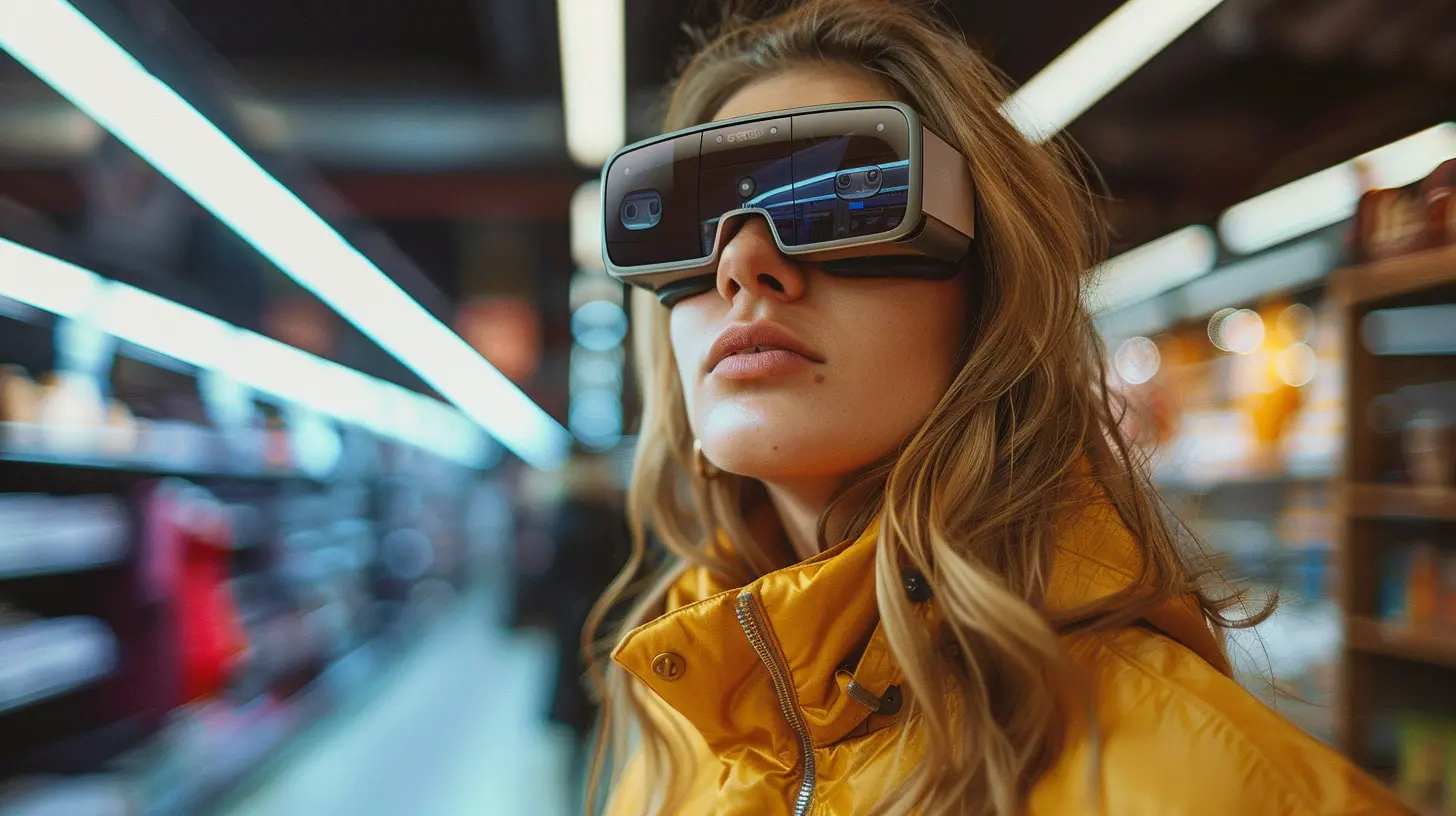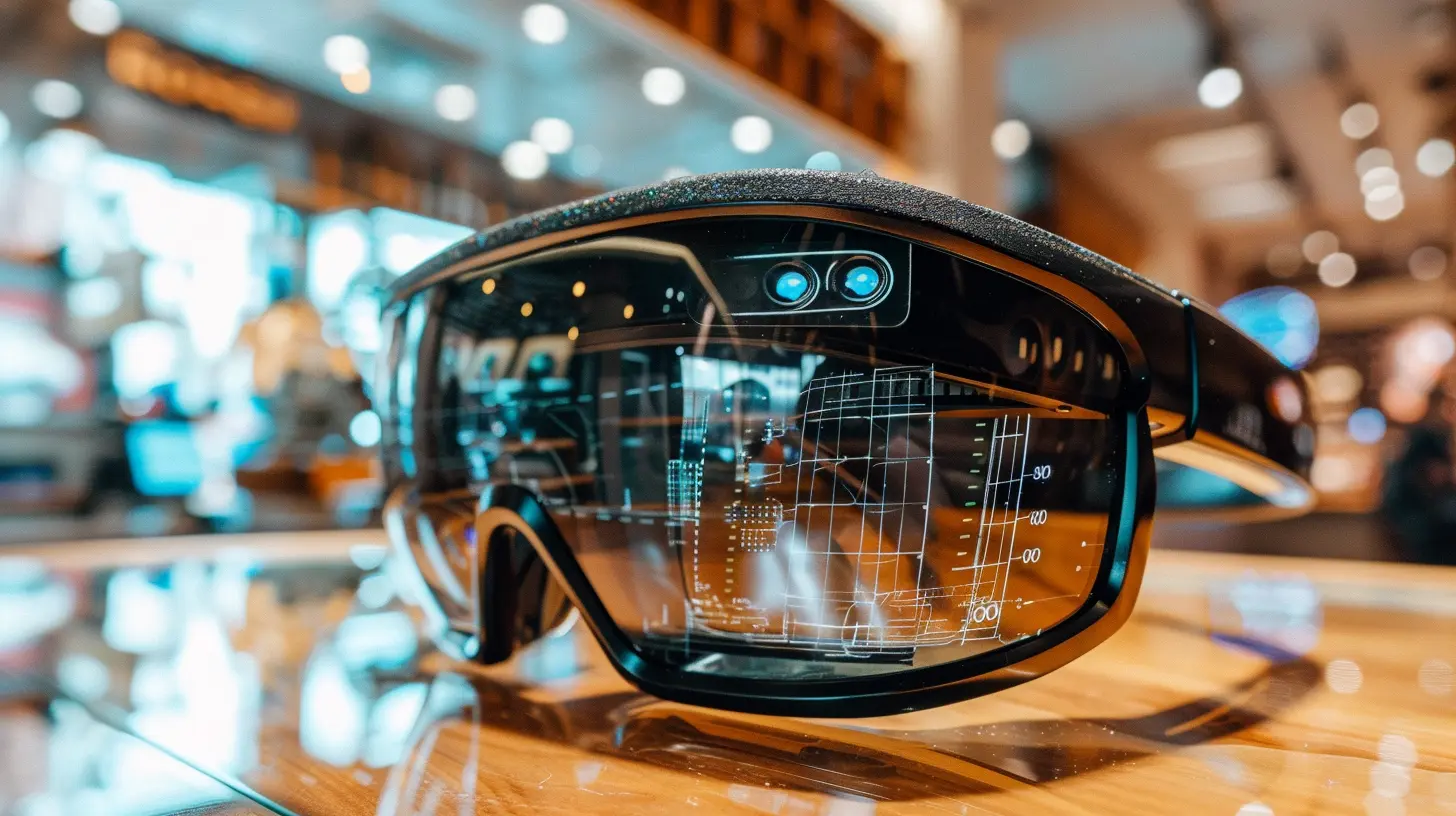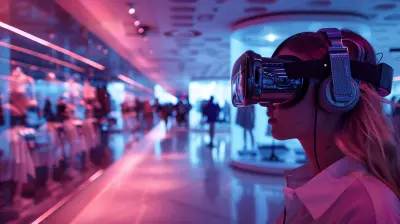How AR Glasses Are Redefining Retail Experiences
23 November 2025
The world of retail is changing fast, and one of the biggest game-changers is Augmented Reality (AR) glasses. Imagine walking into a store, putting on a sleek pair of AR glasses, and instantly seeing product details, personalized recommendations, or even virtual try-ons—all without touching your phone. Sounds exciting, right?
Retailers are always looking for ways to enhance the shopping experience, and AR glasses might just be the futuristic tool that transforms how we shop. Let’s dive into how AR glasses are redefining retail experiences and why they may soon be a must-have for both customers and businesses.

The Evolution of Shopping
Before we get into the magic of AR glasses, let’s take a quick trip down memory lane.Remember when shopping meant physically visiting a store, browsing through aisles, and asking a salesperson for help? Then came e-commerce, making shopping more convenient with a few clicks. Fast forward to today, and we have Augmented Reality (AR) and Virtual Reality (VR) entering the scene, creating a blended digital-physical shopping experience.
AR glasses take things a step further, allowing you to interact with products in real-time—bridging the gap between online and offline shopping.

How AR Glasses Work in Retail
So, how exactly do AR glasses work in a retail setting? Unlike VR, which immerses you in a completely virtual world, AR overlays digital information onto the real environment. When you wear AR glasses, you can see digital elements like product descriptions, prices, and even virtual assistants while still interacting with the real world.Retailers use AR glasses in multiple ways to enhance the shopping experience. Let’s break down some of the most exciting features:
1. Virtual Try-Ons
Ever wanted to see how a pair of sunglasses or a dress looks on you without actually trying them on? AR glasses allow virtual try-ons, helping shoppers visualize how products will look before making a purchase.- Fashion Retail: Shoppers can try on clothes, shoes, or makeup virtually, reducing the need to wait for fitting rooms.
- Eyewear Stores: You can see how different eyeglass frames look on your face in real time.
- Jewelry Shops: Test out different rings or earrings without physically touching them.
This feature saves time, reduces returns, and makes shopping more fun.
2. Personalized Shopping Experience
Imagine walking into a store, and instead of wandering aimlessly, AR glasses instantly guide you to products you might like. Using AI-powered recommendations, these glasses can provide:- Personalized discounts based on past purchases.
- Product comparisons without having to scan barcodes or search online.
- Interactive shopping assistants to answer your questions in real-time.
This level of personalization makes shopping feel more intuitive and tailored to individual tastes.
3. Interactive In-Store Navigation
Large department stores or supermarkets can be overwhelming, especially when you're looking for a specific item. AR glasses can provide indoor navigation, showing digital arrows or directions to guide you straight to the product you need.For instance, if you're looking for organic almond milk, your AR glasses can:
1. Highlight the shortest route to the aisle.
2. Display additional product details, like nutritional facts or customer reviews.
3. Suggest complementary items, like granola or smoothie recipes.
It’s like having your own personal shopping assistant without the hassle of asking store employees for directions.
4. Instant Product Information
How often do you check online reviews before buying something? With AR glasses, you can see real-time product reviews, ratings, and detailed descriptions just by looking at an item.For example:
- Scan a shoe, and see how other customers rated its comfort and durability.
- Check the sustainability rating of a product before purchase.
- See allergy or dietary information just by glancing at a food label.
This adds transparency to shopping and helps customers make informed decisions instantly.
5. Contactless Payments
We've already seen how mobile payments and contactless cards have taken over. With AR glasses, the checkout process becomes even smoother.- Look at a product, confirm the purchase with a simple voice command or a hand gesture, and it’s added to your cart.
- Your payment is seamlessly processed through AR-integrated payment systems.
This reduces long checkout lines and makes shopping more convenient, especially in a fast-paced world.

The Benefits of AR Glasses in Retail
Now that we know how AR glasses work in stores, let’s talk about the biggest benefits for both customers and retailers.For Shoppers
✅ Enhanced Shopping Experience: More interactive, more engaging, and way more fun.✅ Saves Time: No more searching for items or waiting in long checkout lines.
✅ Personalized Recommendations: Curated product suggestions based on preferences.
✅ Reduced Returns: Virtual try-ons help ensure you buy the right product.
✅ Instant Information: Quick access to reviews, details, and comparisons.
For Retailers
✅ Increased Sales: A personalized experience often leads to higher customer satisfaction and more purchases.✅ Lower Return Rates: When customers see exactly what they’re getting, there are fewer mismatched expectations.
✅ Better Customer Engagement: A tech-driven shopping experience builds brand loyalty.
✅ Data-Driven Insights: AR glasses can gather valuable customer insights to improve store layouts and inventory management.
✅ Competitive Edge: Early adopters of AR glasses can differentiate themselves from competitors.

Challenges and Future of AR in Retail
As exciting as AR glasses are, there are still a few challenges retailers need to tackle:- Cost and Accessibility: AR glasses are still relatively expensive, making mass adoption a challenge.
- Battery Life and Performance: Wearing AR glasses for long periods can drain battery life quickly.
- User Learning Curve: Some shoppers may take time to get comfortable using them.
- Privacy Concerns: AR glasses collect data, and retailers must ensure customer privacy and data security.
Despite these hurdles, the future of AR in retail looks incredibly promising. As technology advances, we can expect AR glasses to become lighter, more affordable, and more powerful.
Are AR Glasses the Future of Shopping?
Absolutely! While they may not completely replace traditional shopping methods, AR glasses will enhance retail experiences in ways we've only dreamed of. They bridge the digital and physical worlds, making shopping more seamless, personalized, and interactive.Retailers investing in AR technology now are setting themselves up for success in the future. So, the next time you step into a store, don’t be surprised if a pair of AR glasses is waiting for you to try on. The future of retail is here, and it’s wearing smart glasses!
all images in this post were generated using AI tools
Category:
Ar GlassesAuthor:

Jerry Graham
Discussion
rate this article
2 comments
Alyssa Barrett
AR glasses are revolutionizing retail, making shopping more immersive and personalized—exciting times ahead for consumers!
November 24, 2025 at 4:49 AM

Jerry Graham
Thank you! We're indeed entering an exciting era where AR glasses will transform how we shop, offering tailored experiences that enhance consumer engagement.
Zara Brown
AR glasses are revolutionizing retail, creating immersive experiences that blend technology with shopping. The future looks bright!
November 23, 2025 at 5:31 AM

Jerry Graham
Thank you! AR glasses indeed have the potential to transform retail by enhancing customer engagement and creating memorable shopping experiences.


